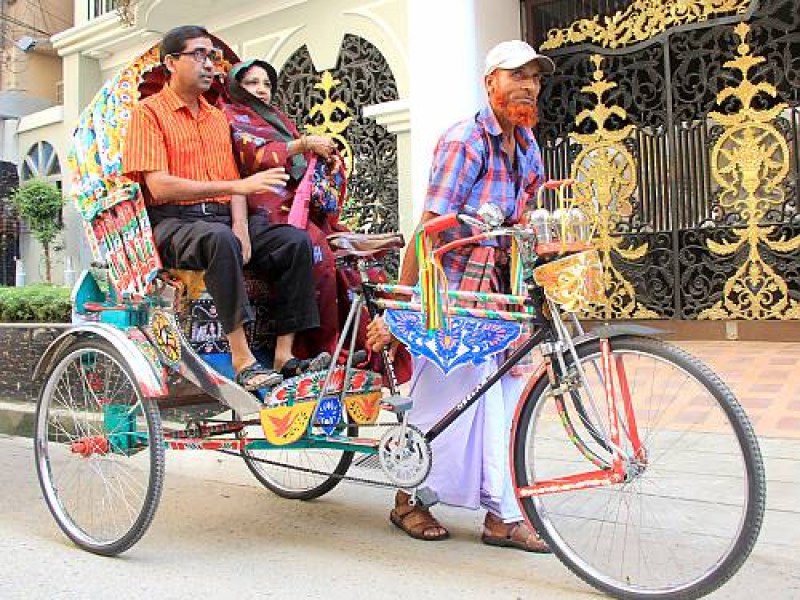- UN Security Council condemns Jammu and Kashmir terror attack |
- 250,000 mourners pay last respects to Pope Francis in 3 days |
- US Restructuring Plan May Include World Bank, IMF & UN Agencies |
- AL-BNP clash leaves over 50 injured in Habiganj |
- Bangladeshi youth injured in BSF firing along Akhaura border |
Dhaka's rickshaws, rickshaw paintings UNESCO heritage

A rickshaw puller starts a trip in his tricycle decorated with paintings on a street in Dhaka, the capital of Bangladesh.
Dhaka, Dec 6 - Rickshaws and rickshaw paintings in Dhaka, Bangladesh have been recognised as intangible cultural heritage by the United Nations Educational, Scientific and Cultural Organisation (UNESCO) at the ongoing 18th session of the Intergovernmental Committee for the Safeguarding of the Intangible Cultural Heritage in Botswana.
The recognition stands along with 43 other nominated submissions, including the Philippines’s Aklan piña handloom weaving, Ceramic arts in Uzbekistan, ‘Dabkeh’ - traditional dance in Palestine, Garba of Gujarat in India and others.
In its official statement, UNESCO said, “The rickshaw is a small, three-wheeled passenger vehicle that is pulled by one person. It is a recognized feature of Dhaka and Bangladesh as a whole. Traditionally made by hand by a small group of craftsmen, almost every part of a rickshaw is painted with colourful floral patterns, natural imagery, birds and animals, creative depictions of historical events, fables, national heroes, movie stars and text.”
“Rickshaws are also decorated extensively with tassels, plastic flowers and tinsel. As they are slow-moving vehicles, the paintings and decorations are easily visible to onlookers, thus becoming a roving exhibition. Decorated rickshaws are emblematic of urban life in Dhaka, resulting in exhibitions and festive events and often featuring in films and other artworks.”
“The traditional process of fashioning rickshaws is transmitted by craftsmen in rickshaw workshops, orally and through hands-on training. Rickshaw painting artists work on commission and usually pass on their knowledge and skills to their children and close relatives. While all rickshaw craftsmen are men, painters include men and women. Rickshaws and rickshaw paintings are viewed as a key part of the city’s cultural tradition and a dynamic form of urban folk art, providing inhabitants with a sense of shared identity and continuity,” the statement mentioned.
The eighteenth session of the Intergovernmental Committee for the Safeguarding of the Intangible Cultural Heritage is currently taking place at Cresta Mowana Resort in Kasane, Republic of Botswana from December 4 to 9. - UNB

